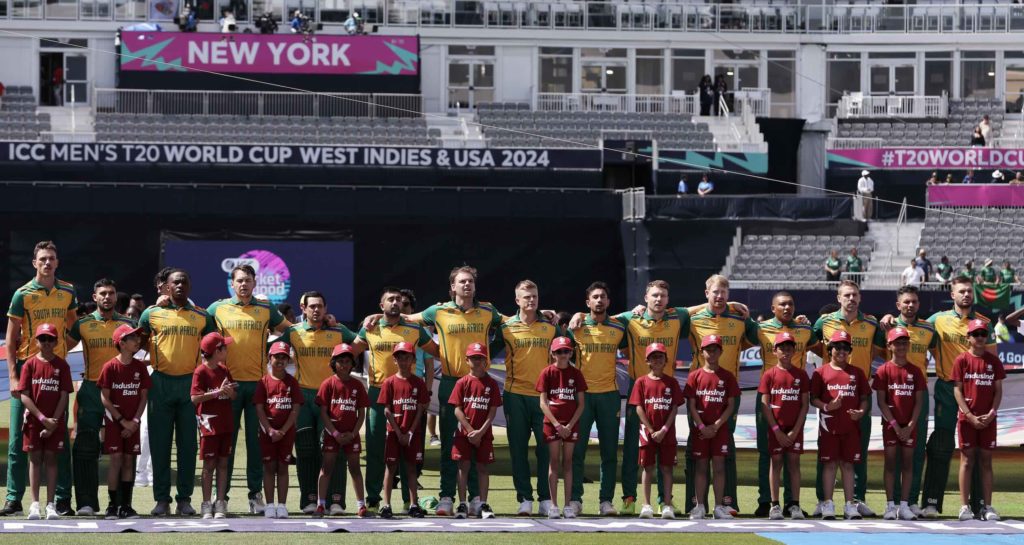The core of the Proteas side will be 33 and above by the next T20 World Cup. Everything must be done to retain them, writes RYAN VREDE.
The dust from the Proteas’ defeat to India in Saturday’s final is still settling, but already attention is turning to the next tournament, to be jointly hosted by India and Sri Lanka in 2026.
The Proteas went eight matches unbeaten leading into the final, beating the defending champions England and co-hosts the West Indies along the way. These performances were marked by an encouraging diversity of players contributing significantly throughout.
However, most key performers shared one trait – they were 31 or older.
That’s exactly what coach Rob Walter and captain Aiden Markram would have hoped their senior players would do at a World Cup. Yet, the Proteas now face an uncertain T20 future as the players in this category will be into their mid-30s, and in the case of Keshav Maharaj (currently 34), Reeza Hendricks (34) and Tabraiz Shamsi (34), into their late 30s in two years.
Heinrich Klaasen (32), Quinton de Kock (31) and David Miller (32) round out the senior players whose futures are uncertain.
There are, of course, players who remain elite well into their 30s. Virat Kohli, who turns 36 in November, topped the IPL’s run-scoring charts. He retired from international T20 cricket on Saturday, following a match-defining innings in a World Cup final.
“This was going to be my last T20 World Cup playing for India, it’s time for the next generation to take over. Two-year cycle, there are some amazing players playing in India, they’re going to take the team forward in the T20 format, and do wonders as we’ve seen them do in the IPL,” he said.
Kohli’s teammate, Rohit Sharma (37), joins him in retirement, having scored the second-highest number of runs at the World Cup.
Saffa Faf du Plessis continues to pile on the T20 runs just two weeks short of his 40th birthday. He finished as the 13th-highest run-getter in the IPL, continuing a trend of him being prominent in T20’s premier franchise competition.
Looking further back, AB de Villiers played his last T20I for the Proteas seven years ago, aged 33, and continued to do well in the IPL thereafter, drawing calls for his international return for numerous World Cups that followed his retirement.
It’s clear batters are generally able to reach deeper into their 30s without becoming liabilities to their team so, form and physical conditioning dependant, the likes of Klaasen, De Kock, Miller and Hendricks may be eyeing the 2026 tournament as a last hurrah.
Failing that, they could certainly play important roles in helping ensure there are strong succession plans in place.
Broadly speaking, elite spinners can outlast their fast-bowling counterparts and remain potent well into their 30s. For example, the world’s top-ranked T20 bowler, Adil Rashid, is 36.
This gives us hope that Shamsi and Maharaj could play for a few years yet and, again, be part of a succession plan. Their presence is critical, given the lack of spinners with world-class potential in the domestic ranks.
By way of example, the highest-ranked South African spinners (outside of those in the World Cup squad) in the 2024 SA20 were Simon Harmer and Imran Tahir, both of whom will not be considered for selection.
Cricket South Africa must ensure that it retains the services (professional appetite, form and physical conditioning permitting) of the senior core.
There are lessons in the Springboks’ 2023 Rugby World Cup success to guide this thinking. The national selectors backed an experienced core of players for the tournament in France. That elicited criticism, with these critics citing an over-reliance on experience, at the expense of gifted, young players who’d impressed in the cycle between World Cups.
Ultimately that experience helped them navigate through a challenging knockout phase, where they’d beat France, England and New Zealand by a point.
Of course, experience alone can’t win you a World Cup. It has to be blended with temperament, tactical skill, individual form, etc. But experience is at the core of all of those qualities.
Sometimes defeats the likes of which the Proteas suffered in Barbados should signal the end of an era. Sometimes there is enough in them to suggest the squad’s peak is a little way off.
The latter is certainly true for the 2024 Proteas. They have unfinished business in 2026 and should be kept together for another crack at breaking the World Cup curse.
Photo: Robert Cianflone/Getty Images







